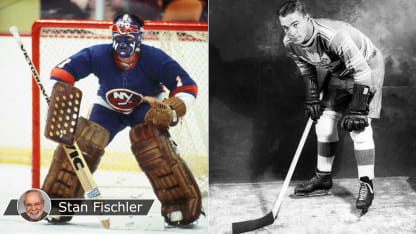Charlie Conacher
and
Baldy Cotton
were best friends, road roommates and occasional linemates on the Toronto Maple Leafs' Stanley Cup-winning team in 1932.
Conacher, nicknamed "The Big Bomber," went on to earn induction into the Hockey Hall of Fame and was named to the
100 Greatest NHL Players
largely because of his booming shot and its accuracy. Cotton was more of a plugger than a scorer during most of his 12 NHL seasons.
During a game at Maple Leaf Gardens, Cotton skated alongside Conacher and, as usual, was hopeful of scoring his odd goal. He found himself in excellent scoring position several times and shouted to Conacher to get him the puck, but found himself waiting in vain. On that night, Conacher invariably shot instead of passing, and that set Cotton's blood boiling.
Baldy fumed during the game, after the game and on the train ride to New York, where the Maple Leafs were scheduled to play the Rangers. Cotton still was whining about Conacher being a puck hog when they unpacked in their room at the Hotel Lincoln on Eighth Avenue, a few blocks away from Madison Square Garden.
After Cotton swore that he wasn't going to pass the puck "to anyone in scoring position as long as I'm with the Leafs," Conacher finally exploded -- and what followed was one of the most unusual punishments a hockey player ever inflicted on a teammate. Ed Fitkin, who had been a publicist for the Maple Leafs, recorded it for posterity in his 1951 book, "The Gashouse Gang of Hockey."
"Charlie suddenly grabbed Cotton in one of his unbreakable bear hugs and hauled him toward the hotel window," Fitkin wrote. "Before Hal knew it he was hanging out the window, held by his ankles, seven stories above the street.
"Cotton stayed out the window until he admitted that Conacher was right [in not passing the puck]; then the laughing Charlie hauled him in and dumped him on the floor."


















